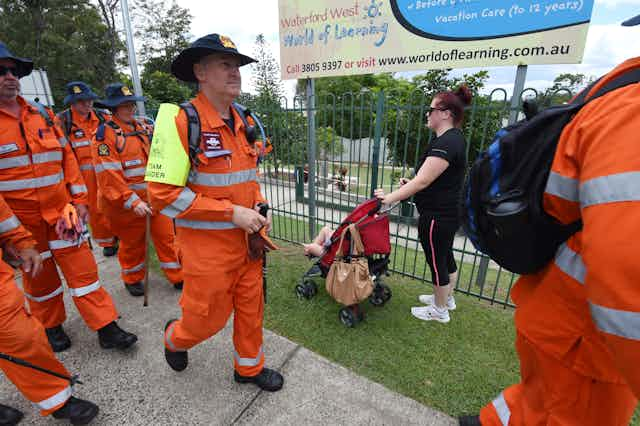Volunteers in Australia are essential to the provision of a range of services. This includes emergency services, hospitals and schools – and volunteers also support the social and cultural life of many communities.
Yet Western countries – including Australia – have recently reported a decline in volunteer rates. Data from Australia collected in 2014 showed that only 31% of the population had volunteered in the past 12 months.
Research has largely focused on identifying why people volunteer. But what are the barriers to volunteer participation? And what can governments and volunteer-involving organisations do to help potential volunteers overcome these problems?
What are the barriers?
The most regularly cited reasons given for not volunteering are ill health, lack of time, and lack of interest.
With an ageing population, ill health is likely to grow as a barrier while at the same time increasing demand for volunteer-provided services such as health or aged care.
However, lack of time and lack of interest may well be interconnected. The highest rates of volunteering are among people aged between 35 and 54, working full-time, with young children. Busy people are able to find the time to volunteer, possibly because it is important enough for them to be able to overcome their time limitations.
Added to these barriers, the ways people choose to volunteer have changed over the past two decades. People are less willing to commit to the ongoing volunteer roles that characterise traditional volunteer organisations such as Meals on Wheels or the local bush fire brigade.
Instead, they are more likely to seek varied and short-term roles. These enable them to do different activities for different organisations, and they are looking for specific benefits from their volunteer activities.
The kinds of activities volunteers can do have also changed. People can now volunteer for short, occasional episodes. They can volunteer in groups, with their families or online. And corporate volunteering through workplaces is popular.
Understanding non-volunteers’ perceptions
A new study in Australia aimed at better understanding volunteers and non-volunteers has revealed surprising results on why people do not volunteer.
Trying to understand the reasons for this decline and what could encourage non-volunteers to participate, we found a person’s likelihood to volunteer is related to their willingness, availability and capability to volunteer.
To identify how these three factors affect participation we have carried out a series of focus groups with current volunteers, past volunteers and non-volunteers.
It seems many people who do not volunteer think that volunteering is not “cool”. They imagine a volunteer in a stereotypical manner, as an older woman who volunteers every week for Meals on Wheels or similar. When shown photos of one-off volunteering, online volunteering and corporate volunteering, many non-volunteers were surprised and agreed this is something they could actually do.
A nationally representative survey of 1,000 Australians – 70% of whom were non-volunteers – found significant differences between volunteers and non-volunteers.
Volunteers rated several values such as benevolence higher than non-volunteers, and reported more favourable perceptions of any giving behaviour – both time and money – compared to non-volunteers. Non-volunteers reported more negative beliefs about the worth of volunteering.
Combining these findings with those of the focus groups, we have non-volunteers with both limited knowledge of volunteering and its value.
One question asked non-volunteers what would make them volunteer. Many non-volunteers said they might volunteer if:
they could do roles that appeal to them (which is related to their willingness to volunteer);
they could stop any time without consequences (related to their availability);
it was closer to where they live (also about availability); and
training was provided (related to their capability).
These perceived barriers show again that non-volunteers are often unaware of new trends in volunteering, such as episodic or online volunteering.
How can we increase participation?
First, many people are never going to volunteer.
Volunteer-involving organisations have limited funds available for marketing and recruitment; these need to be well targeted. We identified a small group of participants as potential volunteers. People who are more likely to convert to volunteering were the most similar to the volunteers in terms of the study variables tested.
This group was only about 10% of the non-volunteer sample. If we could grow participation nationally by 10% of the nation’s non-volunteers, we could increase volunteer numbers in Australia by about 1.6 million people. Imagine how Australia would benefit from that many additional volunteers and the time and skills they contribute.

